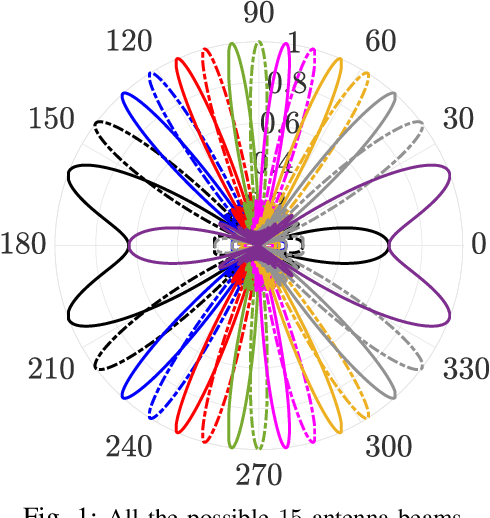Yahia Shabara
Codebook-based Uplink Transmission Enhancement in 5G Advanced: Sub-band Precoding
Oct 30, 2023Abstract:The transformative enhancements of fifth-generation (5G) mobile devices bring about new challenges to achieve better uplink (UL) performance. Particularly, in codebook-based transmission, the wide-band (WB) precoding and the legacy UL codebook may become main bottlenecks for higher efficient data transmission. In this paper, we investigate the codebook-based UL single-layer transmission performance using fully coherent antenna ports in the context of sub-band (SB) precoding. We analyze the SB precoder selection criteria and design an UL codebook used for SB precoding by increasing the number of relative phase shifts of each port. Via link-level simulations, we verify that the UL SB precoding can improve up to 2 dB performance gain in terms of the block error rate (BLER) compared with the UL WB precoding which is the current UL precoding scheme. We also show that UL performance gain is sensitive to the SB size selection as well as the relative phase shift diversity.
Continuous Beam Alignment for Mobile MIMO
Aug 05, 2022



Abstract:Millimeter-wave transceivers use large antenna arrays to form narrow high-directional beams and overcome severe attenuation. Narrow beams require large signaling overhead to be aligned if no prior information about beam directions is available. Moreover, beams drift with time due to user mobility and may need to be realigned. Beam tracking is commonly used to keep the beams tightly coupled and eliminate the overhead associated with realignment. Hence, with periodic measurements, beams are adjusted before they lose alignment. We propose a model where the receiver adjusts beam direction "continuously" over each physical-layer sample according to a carefully calculated estimate of the continuous variation of the beams. In our approach, the change of direction is updated using the estimate of the variation rate of beam angles via two different methods, a Continuous-Discrete Kalman filter and an MMSE of a first-order approximation of the variation. Our approach incurs no additional overhead in pilots, yet, the performance of beam tracking is improved significantly. Numerical results reveal an SNR enhancement associated with reducing the MSE of the beam directions. In addition, our approach reduces the pilot overhead by 60% and up to 87% while achieving a similar total tracking duration as the state-of-the-art.
Source Coding Based mmWave Channel Estimation with Deep Learning Based Decoding
Apr 30, 2019



Abstract:mmWave technology is set to become a main feature of next generation wireless networks, e.g., 5G mobile and WiFi 802.11ad/ay. Among the basic and most fundamental challenges facing mmWave is the ability to overcome its unfavorable propagation characteristics using energy efficient solutions. This has been addressed using innovative transceiver architectures. However, these architectures have their own limitations when it comes to channel estimation. This paper focuses on channel estimation and poses it as a source compression problem, where channel measurements are designed to mimic an encoded (compressed) version of the channel. We show that linear source codes can significantly reduce the number of channel measurements required to discover all channel paths. We also propose a deep-learning-based approach for decoding the obtained measurements, which enables high-speed and efficient channel discovery.
 Add to Chrome
Add to Chrome Add to Firefox
Add to Firefox Add to Edge
Add to Edge